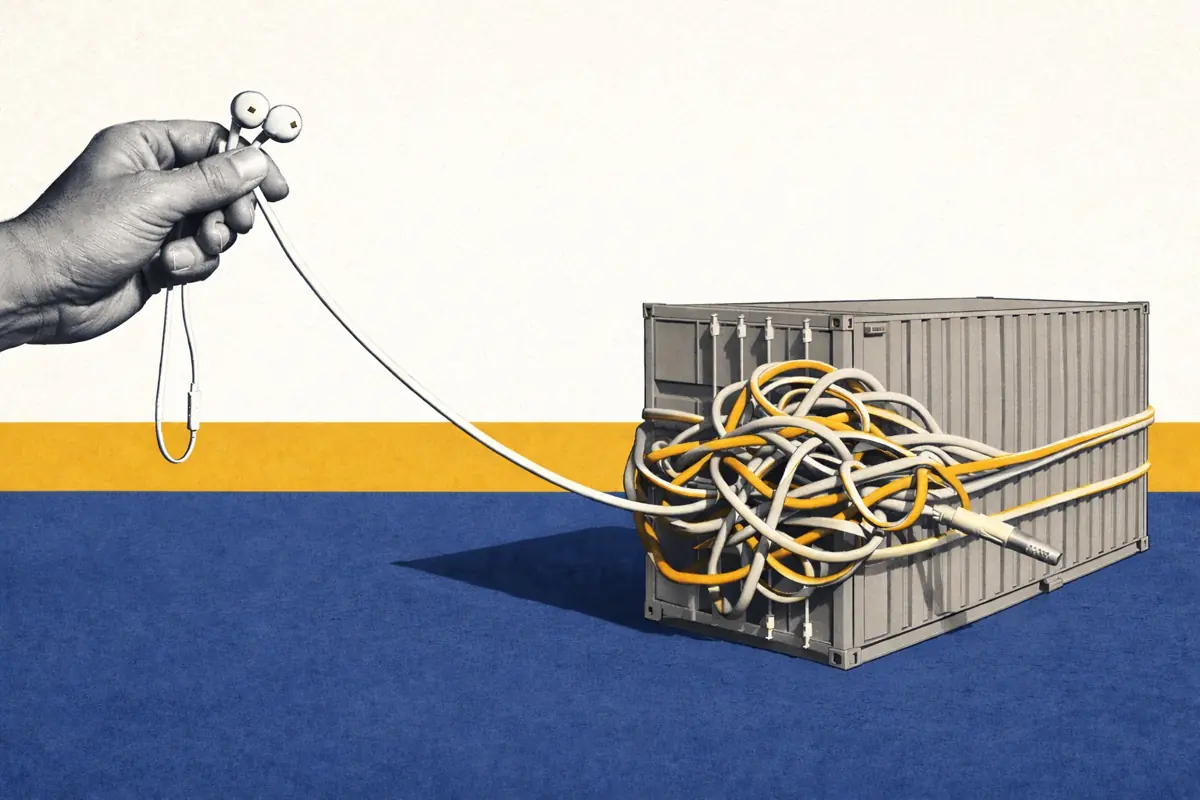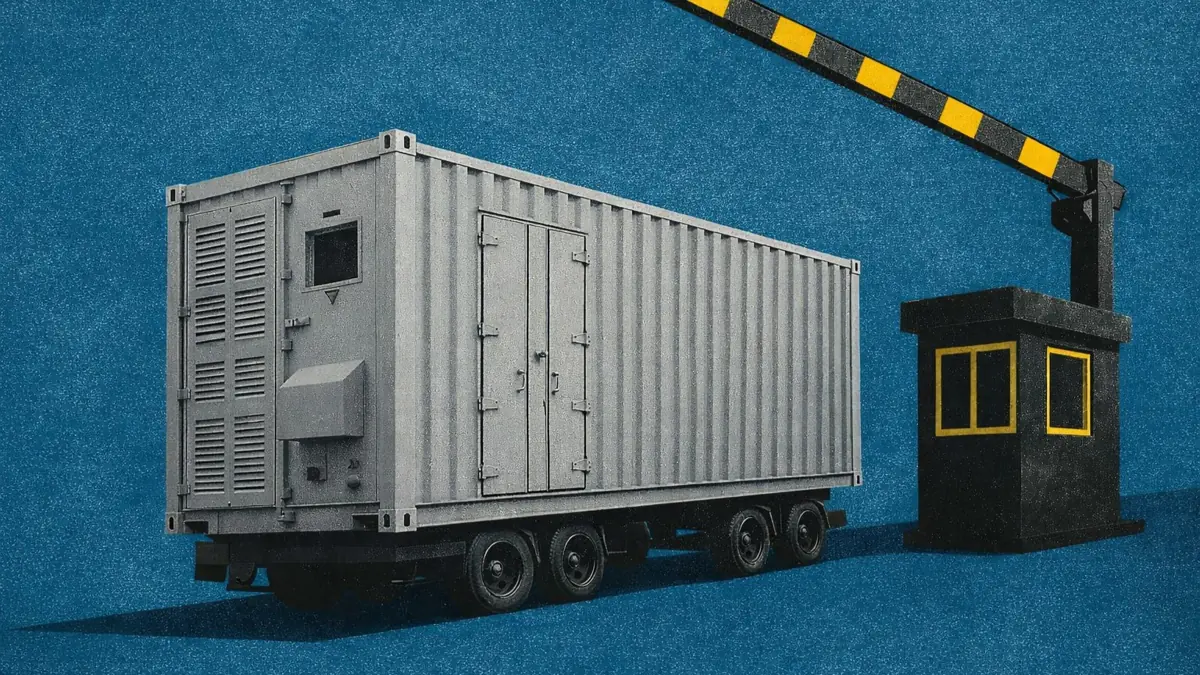PJM’s new interconnection process: results from the first Transition Cycle
PJM’s new interconnection process: results from the first Transition Cycle
On November 20th, 2025, PJM finalized new interconnection agreements and completed the first transition cycle (TC1) of the reformed interconnection process. The participating projects are the second cohort in the transition period to receive interconnection agreements, following the Fast Lane projects, which received the last of their interconnection agreements on April 18th, 2025.
The only remaining projects with interconnection requests currently outstanding are in Transition Cycle 2. PJM expects to finalize interconnection agreements with these projects in the first quarter of 2027.
Key Takeaways
- 23 battery energy storage projects received interconnection agreements. If all of these projects become operational, they will add 2.2 GW of storage capacity to PJM's network.
- It took 668 days, or ~22 months, from the start of TC1 to final agreement, a major improvement from the legacy process, although only 16% of submitted battery capacity reached the final stage.
- Most projects will likely come online between 2028 and 2030. This aligns with historical timelines of 2-3 years between receipt of the interconnection agreement and commercial operation.
- Non-utility developers will dominate the TC1 battery buildout, just as they did in the the Fast Lane.
- Developers have paid deposits for interconnection costs ranging from $0 to $50,000,000.
- High interconnection costs do not always align with stronger arbitrage opportunities; some projects are instead position to capture other revenue streams or utilize incentive programs.
For any questions about PJM’s reformed interconnection process or the projects being processed during the transition period, email aaron@modoenergy.com.
23 projects have received interconnection agreements via Transition Cycle 1
PJM has finished processing all of the projects that submitted interconnection requests between April 1st, 2018, and October 1st, 2020.
89 generation and storage projects, totaling 14.3 GW of capacity, received interconnection agreements through PJM’s TC1. 23 of these projects (26%) were battery energy storage resources, providing 2.2 GW (15%) of the cycle’s total capacity.
Of these storage projects, there were 10 standalone batteries and 13 hybrid or colocated batteries. The largest new addition by rated power will be a 500 MW, four-hour duration project called “Fourth Quarter” in Maryland. The longest duration projects will be “Liberty II” and “French Creek.” They are both 10-hour batteries - all other batteries are four hours.
TC1 saw lower queue attrition rates, but is not representative of future queue attrition
At the outset, 40.6 GW of projects, including 10.4 GW of battery capacity, entered TC1. Ultimately, 35% of total submitted capacity received final agreements, with 16% of battery capacity making it through.
This is an improvement over PJM’s serial queue, which finalized interconnection agreements for only about 20% of submitted capacity and only 14% of submitted storage capacity.
However, TC1 is not fully representative of future queue attrition. TC1 projects were grandfathered into the reformed process after spending more than three years in the now-closed serial queue. Some may have exited because they were unprepared to meet the new deposit requirements, pushing attrition higher. Other speculative projects may have dropped out during the long wait before the transition officially began. This would reduce the recorded attrition rate.
Future cycles, particularly those after the Transition Period, will provide a clearer indication of whether the reform reduces attrition as intended.
Still, even under the reformed process, batteries continue to drop out at higher-than-average rates. This reflects characteristics such as high exposure to merchant revenue uncertainty and co-located project dependencies.
Interconnection processing times are shorter under the new system
The process took 668 days, or 1.8 years, a clear improvement over the 5+ years common under the old system.
Overall, TC1 largely followed its intended schedule of 1.7 years from the beginning of Phase 1 to the final agreement. Phase 2 finished only three days behind plan, while Phase 3 concluded 28 days ahead of schedule.
The only major delay occurred when PJM paused the process from January 21 to April 21, 2025. This pause was required because TC1 could not proceed until PJM finalized the interconnection agreements for the last of the Fast Lane projects.
Timelines to commercial operations diverge among Transition Cycle 1 batteries
Although the 23 batteries advanced through System Impact Studies as a cluster, their timelines to commercial operation vary widely.
Some may begin operating as early as May 2027. Others, such as Fourth Quarter, are targeting February 2030 for commercial operation.
This timing mirrors the pattern seen in Fast Lane projects, with most batteries targeting CODs between 2027 and 2030. However, the period between receiving an interconnection agreement and achieving commercial operation is highly uncertain due to risks in:
- permitting,
- construction,
- and/or financing.
As a result, developer timelines are often overly optimistic.
Independent power producers continue to dominate PJM’s battery buildout
Much like the Fast Lane cohort, independent power producers (IPPs) such as RWE, Jupiter Power, and EDP are developing the majority of TC1 batteries.
RWE is responsible for Fourth Quarter, the largest battery in the cohort, and contributes the most TC1 storage capacity with 555 MW. EDP, meanwhile, has the highest project count, having secured four interconnection agreements.
Jupiter Power has continued its strategy of deploying long-duration storage. Its TC1 project, a 10-hour battery, adds to the four long-duration projects it advanced in the Fast Lane cycle.
Beyond IPPs, Dominion is the one utility in this cohort. Its two 75 MW projects, Brunswick Battery Storage and Mulberry BESS, are both targeting commercial operation in 2029. These two batteries, along with their five Fast Lane batteries, will bring Dominion’s utility-owned battery capacity to 400 MW.
Projects have paid a wide range of security deposits based on their interconnection cost allocations
Within PJM, interconnecting resources must pay for any upgrades or related costs deemed necessary by the interconnecting utility or PJM. These costs are first estimated in Phase 1 and finalized in Phase 3 of the interconnection process. They are shared among interconnecting entities and allocated based on each entity’s system impact. They consist primarily of physical network upgrades and system-reliability upgrades, but can also include the cost of future analyses performed by transmission owners. Notably, these costs do not include the cost of PJM’s system impact studies, which developers contribute to earlier in the interconnection process.
Four batteries face cost allocations below $1 million, including one, South Orchard, with no required upgrades.
By contrast, three batteries have paid more than triple the cohort average to prepare the grid for their interconnection, with Three Lakes Solar alone exceeding $50 million.
Interconnection costs may scale with project size, and a $10 million network upgrade carries very different implications for a 500 MW project than for a 10 MW project. For this reason, costs can also be evaluated on a $/kW basis, calculated as total interconnection cost divided by planned installed capacity.
Even on a $/kW basis though, costs vary widely. Average cost allocations for TC1 batteries are $190/kW, but individual project costs differ significantly. Five projects face interconnection costs above $400/kW, while five others will pay less than $15/kW.
Higher interconnection costs do not correspond with high revenue opportunities from energy arbitrage
As TC1 storage comes online, PJM’s Ancillary Service markets will face increasing saturation, as already seen in CAISO and ERCOT. As a result, energy arbitrage will make up a larger share of merchant revenue and become a core driver of TC1 project performance. The top-bottom (TB) spread of a nearby node provides an estimation of each project’s maximum intraday arbitrage potential.
Although some projects have paid outsized interconnection costs, they may not necessarily be sited at nodes with higher arbitrage potential.
Five projects would have low ratios between potential arbitrage revenues and interconnection costs, if arbitrage opportunities remain similar relative to other nodes in PJM. Notably, four of them share sites with solar resources and they all have other characteristics that help explain their position:
- French Creek, which has the highest interconnection cost per megawatt, is a 10-hour battery. It qualifies for a higher Effective Load Carrying Capability (ELCC), allowing it to offer a larger share of its capacity into PJM’s capacity auction. Its operating strategy is likely geared more toward securing capacity awards than maximizing energy arbitrage potential, especially with recent capacity auctions clearing at increasingly high prices.
- Mulberry BESS is developed by Dominion, which is also the local transmission owner. Dominion is probably advancing the project to meet IRP objectives rather than in response to merchant price signals. At this time, Dominion’s storage capacity target is set by the Virginia Clean Energy Act which mandates the utility to procure 2.7 GW of capacity by 2035.
- Missouri Avenue Battery Storage Project is located in New Jersey, making it eligible for the Garden State Energy Storage Program. This program provides fixed payments for 15 years, allowing the project to secure revenue even with limited energy arbitrage potential.
- Three Lakes Solar and Cass County Solar are both located in southwest Michigan. This region hosts four TC1 batteries despite representing a relatively small share of PJM’s footprint. Michigan’s streamlined permitting structure contributes to this trend by giving the state authority over local permitting and allowing projects to bypass potential local opposition.
At the other end of the spectrum, Fourth Quarter has by far the largest Energy arbitrage opportunity and a relatively low interconnection cost per megawatt. This battery is one to watch, as it will add 500 MW of storage capacity to the Maryland–Virginia area. While the battery will help ease congestion in the area, this part of the country has experienced GWs of demand growth in recent years, with further development of data centers and large loads anticipated in the coming years. It's likely these new large loads will continue to further exacerbate congestion, and that Fourth Quarter will not entirely cannibalize the outsized arbitrage opportunities for mid-Atlantic BESS.
Subscribers to Modo Energy’s PJM research can access the data behind the above charts in a downloadable data book below. If you’re interested in becoming a subscriber, click here book a demo.
Download
Already a subscriber?
Log in







